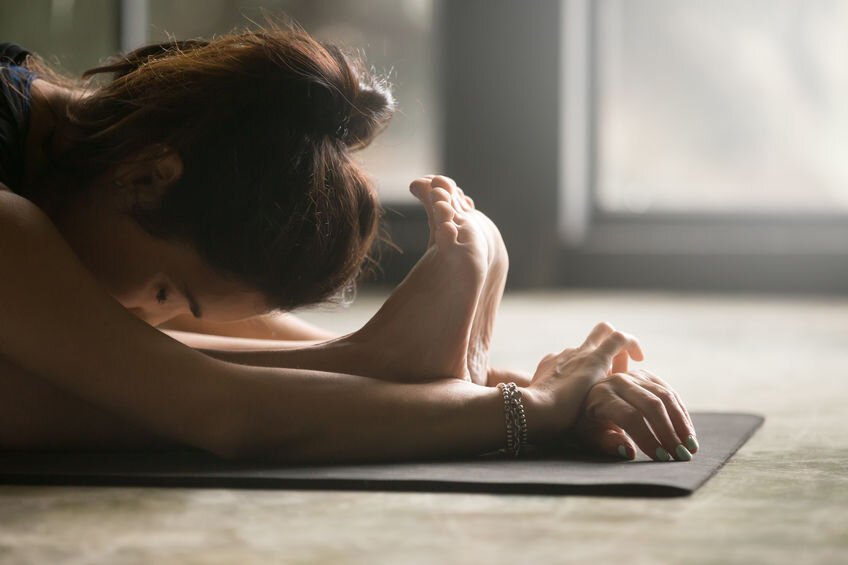Yin and Restorative Yoga: The Receptive Side of Practice
Written by Steve Sampson, RYT-500, ERYT-200
In the general media and even on the Serenity website, you might see a variety of terms used to describe a yoga class. In this article, I will describe two styles of practice, yin and restorative, to help you understand how they differ from other forms of yoga…and from each other.
Yin & Yang
Before discussing types of yoga, let’s take a moment to delve into two other terms that you may be familiar with: yin and yang. In Taoist philosophy, the concept of yin and yang originated from observations on the cyclical and transformative qualities of nature. The spring and summer seasons bring activity and abundance, which gives way to relative stillness and rest during the fall and winter months, as nature prepares for the next cycle of growth. Through these observations, Taoists came to understand that dynamic “yang” activity and nourishing “yin” stillness complement each other; both are needed to establish balance and harmony.
And that brings us back to different types of yoga class. The physical practices in some classes include dynamic movement, typically with an emphasis on stretching and strengthening our muscles. These vinyasa or flow styles of class address our need to incorporate “yang” activity and movement into our routine. Other forms of yoga, such as yin or restorative classes, are practiced in relative stillness. Postures (or asanas, to use the Sanskrit term) are held with less intensity, but for a longer period of time. These styles of practice offer a nurturing “yin” receptivity, helping to balance the fast pace of our daily lives.
Yin Yoga Vs. Restorative Yoga Classes
Let’s take a deeper look at what you will generally experience in a yin or restorative yoga class. While both forms of practice are similar in that they are relatively slow and passive practices, there are some differences in the intent behind that stillness.
In a yin yoga class, postures are held for a longer period of time (as compared to a vinyasa or flow class), but with a much milder intensity. Physically, the emphasis of a yin yoga pose is to bring gentle stimulation to the connective tissues in one or more target areas in the body. Through the duration of the pose (typically 3 to 5 minutes in my class), you might make subtle adjustments to your position and/or props to maintain an appropriate level of sensation in the targeted area, but the pose is otherwise relatively still. Dense, connective tissues (such as fascia, tendons, and ligaments) build strength and resilience through this more passive approach to exercise, in much the same way that muscle tissue responds to repetition and rhythmic movement.
A restorative yoga class is similar to a yin practice, in that postures are held in stillness for a relatively longer time. However, while a yin yoga pose has the intention to stimulate a particular area of the body and maintain sensation for a period of time, in a restorative pose the goal is to distribute any sensation evenly throughout the body. By supporting and grounding the body, restorative yoga enhances the parasympathetic nervous system, calming both body and mind. Deep relaxation is explored with an emphasis on “being” rather than “doing.”
In both yin and restorative yoga, the relative stillness of the long-held poses allow space for meditative reflection, while nourishing and enhancing the flow of energy through our bodies.
Which style of practice is right for you? The answer is…it depends!
As the Taoists learned through their observations, both yin and yang are necessary for balance. The right mix of activity (or yoga classes) to find that balance may differ for each of us, and can change at different stages of life. Being present with how you feel in your daily life (physically, mentally, and energetically) can help you decide what is needed to move towards harmony.
Steve Sampson has been teaching since 2014 and is a 500-Hour Registered Yoga Teacher as well as a 200-Hour Experienced Registered Yoga Teacher.
He is best known for exploring the physical, energetic, and philosophical practices of yoga with an emphasis on pursuing functional health and holistic wellness.
Head over to Steve’s Site to learn more!




